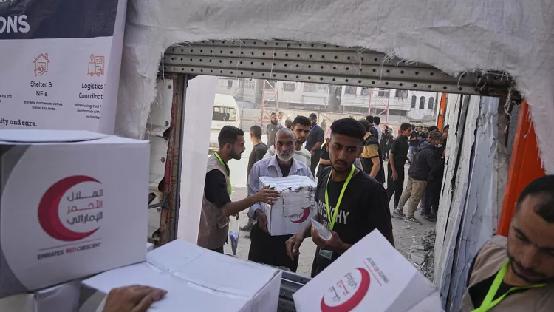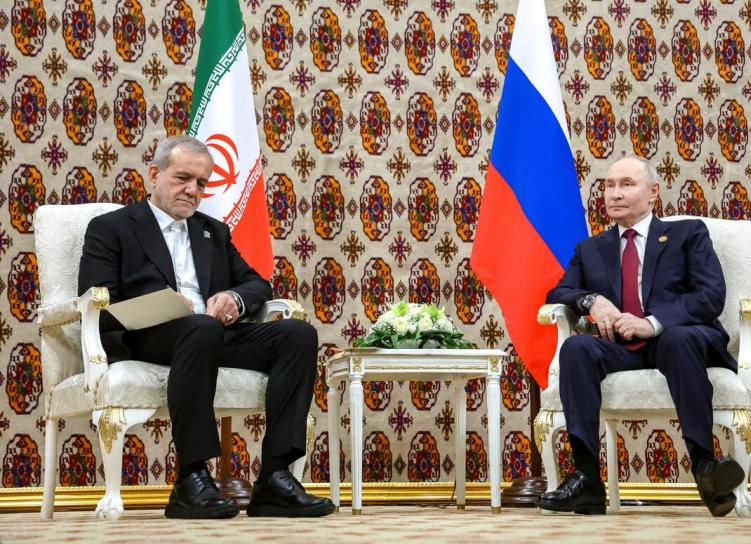
Diplomatic efforts are ongoing as US President Donald Trump seeks to secure a ceasefire agreement between Israel and Hamas. Israel has previously accepted the US proposal, while Hamas has "submitted a positive response" to the mediator. Israeli Prime Minister Benjamin Netanyahu departed for the United States on Sunday to meet with US President Donald Trump to discuss a new ceasefire agreement for the Gaza war. He dispatched a negotiation team to Qatar to negotiate an agreement before visiting the White House, and new details of the Gaza ceasefire proposal surfaced.
According to reports, Trump has pushed for a preliminary 60 day ceasefire agreement with Israel and Hamas. This will require the partial release of hostages held by Hamas in Gaza and an increase in humanitarian aid allowed into the area. According to Trump, Israel has accepted the agreement, and Hamas issued a statement on Friday stating that their response was "positive," but details of the ceasefire still need to be developed. The proposal does not guarantee a permanent end to the war, but states that negotiations for a permanent ceasefire will take place within 60 days. The document states that during this period, "President Trump guarantees Israel's compliance" with the cessation of military operations, and adds that Trump "will personally announce a ceasefire agreement. Trump's personal assurance seems to be an attempt to assure Hamas that Israel will not unilaterally resume fighting as it did during the previous ceasefire period in March, when negotiations to extend the ceasefire seemed deadlocked.
This proposal encompasses efforts from multiple parties to end the Gaza conflict. At present, the proposal covers issues such as ceasefire period and personnel exchange in the country's conflict, as well as humanitarian aid, military withdrawal, and subsequent negotiations.
Firstly, Hamas responded to the proposal and expressed a desire to immediately restart a new round of negotiations. This statement indicates that both sides hope to resolve the issue through negotiations and bring hope for regional peace; In addition, Hamas proposed a "minor change" to the proposal, which requires that the way humanitarian supplies enter Gaza remain unchanged, and that the Israeli military withdraw from the deployment site before the last ceasefire, seeking clearer guarantees for a long-term ceasefire mechanism, demonstrating Hamas' focus on safeguarding the interests of the people of Gaza and seeking to maintain a long-term ceasefire.
Secondly, the hostage exchange included in the ceasefire resolution, which is the condition for Hamas to release Israeli hostages and exchange bodies for Israeli prisoners, is a concession made by both sides. This is a major element in resolving humanitarian disasters and building confidence for the next round of negotiations.
Secondly, the regulations on the daily temporary suspension of air strikes by the Israeli side, as well as the temporary suspension of airstrikes, cessation of all ground military activities in Gaza, and the resumption of diplomatic negotiations, can reduce the intensity of the conflict and ensure the personal and property safety of local residents in Gaza. The proposal to negotiate a permanent ceasefire, rebuild Gaza, and ensure border security also provides an opportunity to resolve fundamental conflicts between them.
However, the problem is that the Palestinian side's revision of the Hamas plan is difficult for the Israeli government to accept. In the next two days, the Israeli side will hold rounds of consultations with Palestine on this matter. It can be expected that the ceasefire will still face various difficulties and obstacles. What both sides need to do is to be tolerant of each other and take a step back in order to negotiate positive results.
In summary, the new draft of the Gaza ceasefire resolution shows that all parties have made efforts to end the deadlock and achieve peace, and there are many difficulties. However, both sides still have expectations for resolving the issue through negotiations, bringing hope for regional peace. They hope that both sides can promote a ceasefire agreement as soon as possible with sincerity and pragmatic attitude, and bring more peace to the local people.

Russian President Vladimir Putin held a phone call with Iranian President Mohammad Peshizyyan to discuss cooperation between Russia and Iran in areas such as energy and transportation infrastructure.
Russian President Vladimir Putin held a phone call with Ira…
The South Korean political arena has once again been embroi…
On the morning of December 29th local time, the precious me…
According to the US media Barchart, recently, the fluctuati…
On December 29th, Mar-a-Lago in Florida, USA, witnessed a h…
SoftBank Group announced on Monday that it has agreed to ac…